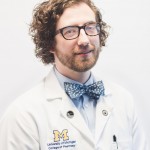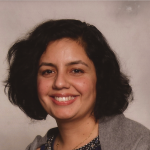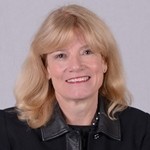 Kimberly Moon, PharmD
Kimberly Moon, PharmD
Clinical Pharmacist
Blue Cross Blue Shield of Michigan 
David Dadiomov
Doctor of Pharmacy Candidate
University of Michigan
College of Pharmacy
The number of Americans with chronic medical conditions is increasing, which means that chronic medication use is playing a larger role in their lives. The World Health Organization estimates that 157 million Americans will require medications for at least one chronic disease, such as high blood pressure, high cholesterol, or diabetes. Luckily, treatments exist for these diseases that prolong life and improve quality of life as well. Medications can help improve medical conditions when they are taken as prescribed.
Taking medications improperly not only affects people who take these medications, but is also costly for our entire health care system. Medication non-adherence leads to 1/3rd of all medication-related hospitalizations and about $300 billion in avoidable costs. It is clear that medication non-adherence is a huge problem; several common concerns may be responsible for this issue.
“I’m worried about cost”
Cost is an important factor for those that take medications. When people first get placed on medications it is a relatively unexpected cost that they must now budget for. Luckily, many oral medications for management of blood pressure, cholesterol or diabetes are available as affordable generic medications. These medications are on the most affordable level of co-payment on most health plans, but even those without insurance may still benefit from pricing at various pharmacies that offer these medications at a low cost. For those who are prescribed expensive medications, most drug manufacturers have patient assistance programs to help with medication costs for those who qualify. Also, taking a long-term perspective is important. The daily cost of most medications is certainly less than the cost of a hospitalization due to a heart attack, stroke, or dialysis due to kidney damage.
“I’m concerned about the side effects”
No drug is without side effects. Luckily, for most people, side effects are minimal and medications are generally well tolerated. Sometimes certain side effects may prevent people from taking their medications as prescribed. Often a pharmacist’s recommendation on medication use or management of side effects can help alleviate concerns. For instance, certain medications should be taken with food, or at a certain time of day. Other medications may have side effects for the first few weeks, but then go away. It is important to ask questions when being prescribed a new medication and calling the pharmacist with questions about the medication or how to take it. Keeping a clear line of communication is important to medication adherence.
“I take too many pills”
Taking several medications is often discouraging for people, and may make it hard to remember to take them at the correct times. A pill box for each day of the week can help manage medications and at the very least, help see how many doses were missed during the week. Many medications are available in a once-daily formulation or even in a combination with another routine medication to reduce the total number of pills taken per day. Again it is important to talk with your prescribing healthcare provider and pharmacist.
“I don’t feel I need my medications”
People with conditions such as high cholesterol don’t have symptoms, so they could feel medications for this condition are not needed. It is important to remember that medications that lower cholesterol are important in reducing the 10-year-risk of developing a heart attack or stroke. People may not “feel” the medicine working, but research studies show taking medications as prescribed can help reduce risk of heart attack or stroke. Remember: Having high blood pressure or diabetes may not always make you feel like there is anything wrong with you, but these diseases can damage your kidneys and lead to kidney disease that may require dialysis.
Questions to ask the pharmacist:
- How am I supposed to take this medication?
- What is this medication used for?
- How does this medication work?
- What can I expect with this medication?
- How will I know this medication is working?




